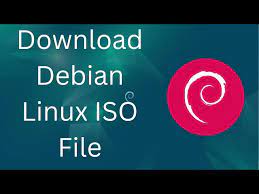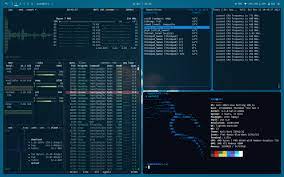Get Debian: Your Gateway to a Stable and Versatile Operating System
Get Debian: Your Gateway to a Stable and Versatile Operating System
Debian is a renowned open-source operating system that has been the choice of many users worldwide for its stability, versatility, and commitment to free software principles. If you are looking for a reliable platform that offers a wide range of software packages and robust security features, Debian is the ideal solution for you.
Why Choose Debian?
Debian is known for its rock-solid stability, making it suitable for both desktop and server environments. With its extensive package repository, you have access to thousands of applications that cater to various needs, whether you are a developer, designer, student, or casual user.
One of the key advantages of Debian is its commitment to free software. The project upholds the principles of open-source development, ensuring that users have the freedom to use, modify, and distribute the software as they see fit. This ethos has made Debian a trusted platform among those who value transparency and user empowerment.
Getting Started with Debian
To get started with Debian, simply visit the official website and download the installation image that matches your hardware architecture. Whether you prefer a full desktop environment or a minimal setup, Debian offers various flavours to suit your preferences.
Once you have downloaded the installation image, follow the step-by-step instructions provided in the installation guide to set up your system. Debian’s installer is user-friendly and guides you through the process of configuring your system according to your requirements.
Joining the Debian Community
As a Debian user, you become part of a vibrant community of developers, contributors, and enthusiasts who are passionate about open-source software. Whether you need help troubleshooting an issue or want to contribute back to the project, there are forums, mailing lists, and IRC channels where you can engage with like-minded individuals.
The collaborative nature of Debian ensures that it continues to evolve with input from its diverse community. By participating in discussions, reporting bugs, or even packaging software for Debian repositories, you can play a role in shaping the future of this esteemed operating system.
Experience Freedom with Debian
By choosing Debian as your operating system, you embrace freedom in computing. With its stable foundation, vast software ecosystem, and strong community support, Debian empowers users to customise their systems according to their needs without compromising on security or performance.
Get started with Debian today and discover why it remains a top choice for those seeking a reliable and versatile operating system rooted in open-source values.
9 Essential Tips for a Smooth Debian Installation and Setup
- Download the Debian ISO file from the official website.
- Create a bootable USB drive using tools like Rufus or Etcher.
- Backup your important data before installing Debian.
- Choose the right Debian version based on your hardware architecture (e.g. 32-bit or 64-bit).
- Follow a step-by-step installation guide for Debian to avoid errors.
- Customize your desktop environment during installation or after setup.
- Update your system regularly using the package manager (apt-get or apt).
- Explore the vast range of software available in Debian’s repositories.
- Join online forums and communities for support and troubleshooting.
Download the Debian ISO file from the official website.
To begin your Debian journey, ensure to download the Debian ISO file from the official website. This crucial step will provide you with the installation image necessary to set up your Debian system. By obtaining the ISO file directly from the official source, you can trust in its authenticity and reliability, setting the foundation for a secure and seamless installation process.
To begin your Debian installation journey, a helpful tip is to create a bootable USB drive using tools such as Rufus or Etcher. These user-friendly applications allow you to easily transfer the Debian installation image onto a USB drive, enabling you to boot your system from the USB drive and proceed with the installation process. By utilising tools like Rufus or Etcher, you can ensure a smooth and efficient installation of Debian on your desired hardware configuration.
Backup your important data before installing Debian.
Before embarking on the installation of Debian, it is crucial to prioritise the safety of your important data by backing it up. By taking this precautionary step, you can safeguard your valuable files, documents, and settings in case of any unforeseen issues during the installation process. Backing up your data ensures that even if something unexpected occurs, such as data loss or corruption, you can restore your information with ease and continue using your system without disruption. Remember, a little preparation in the form of data backup can go a long way in ensuring a smooth and stress-free installation experience when setting up Debian.
Choose the right Debian version based on your hardware architecture (e.g. 32-bit or 64-bit).
When embarking on your Debian installation journey, it is imperative to select the appropriate Debian version that aligns with your hardware architecture. Whether your system operates on a 32-bit or 64-bit architecture, choosing the right Debian version ensures optimal performance and compatibility. By matching the Debian release to your hardware specifications, you can harness the full potential of your system and enjoy a seamless computing experience tailored to your device’s capabilities.
Follow a step-by-step installation guide for Debian to avoid errors.
To ensure a smooth and error-free installation process, it is advisable to follow a step-by-step installation guide for Debian. By carefully adhering to the instructions provided, you can navigate through the setup process with confidence and avoid common pitfalls that may lead to errors. Following a structured approach not only simplifies the installation but also helps in configuring your Debian system accurately, setting the stage for a stable and reliable operating environment.
Customize your desktop environment during installation or after setup.
Customise your desktop environment to suit your preferences by taking advantage of Debian’s flexibility either during the installation process or after the initial setup. Whether you prefer a sleek and minimalistic interface or a feature-rich environment with customisable widgets and themes, Debian offers you the freedom to tailor your desktop experience to reflect your unique style and workflow. With a wide range of desktop environments available, such as GNOME, KDE, Xfce, and more, you can personalise your workspace to enhance productivity and aesthetics according to your needs.
Update your system regularly using the package manager (apt-get or apt).
To ensure your Debian system remains secure and up-to-date, it is essential to regularly update it using the package manager, such as apt-get or apt. By running system updates frequently, you can benefit from the latest security patches, bug fixes, and software enhancements provided by the Debian community. This proactive approach not only helps in maintaining system stability but also safeguards your data and privacy against potential vulnerabilities. Make it a habit to utilise the package manager to keep your Debian system optimised and protected against emerging threats.
Explore the vast range of software available in Debian’s repositories.
Explore the vast range of software available in Debian’s repositories to discover a treasure trove of applications tailored to meet your diverse needs. From productivity tools and multimedia software to development environments and system utilities, Debian offers a comprehensive collection of packages that cater to users across various domains. By delving into the rich ecosystem of Debian’s repositories, you can unlock new possibilities, enhance your workflow, and customise your system with the software that best aligns with your preferences and requirements.
Join online forums and communities for support and troubleshooting.
For those embarking on their Debian journey, a valuable tip is to join online forums and communities dedicated to Debian for support and troubleshooting. By engaging with fellow users and experts in these forums, you can seek guidance, share experiences, and find solutions to any challenges you may encounter along the way. These communities offer a wealth of knowledge and camaraderie that can enhance your Debian experience and help you navigate the intricacies of the operating system with confidence.











